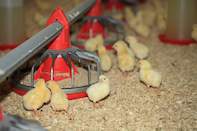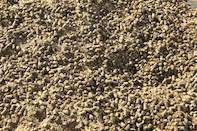Maize is the primary feedstock ingredient in animal feeds in South Africa. The Food and Agriculture Organization of the United Nations (FAO) describes it as the king of feed ingredients because of its high energy content and digestibility. Other grains, in effect, are typically compared to maize in terms of their nutritional value.

Raw Stock
Farmers may harvest their maize and sell it to feed mills, which will process and mix the maize into commercial animal feeds aimed at the poultry, pork, beef, sheep and other livestock industries.
Alternatively, if they have a livestock component, farmers may use a mini feed mill to process the maize and mix it with other ingredients for on-farm usage. The decision will generally depend on the market prices and on-farm demand.

By-Products
The feed industry is also the largest consumer of by-products originating from the processing of maize. According to the Prospectus on the African Maize Industry, these products include maize gluten meal, screenings, germ meal, germ oil cake and hominy chop.
Maize Silage
Farmers may also make silage of the harvested maize crop. Maize silage is fermented high moisture forage made from harvested and chopped up maize and grass crops. The grass is important as it is high in fibre and, therefore, influences the energy density of the silage as well dry matter intake of the animals.
To make it, maize and a grass crop are piled in a silo or pit, compressed to exclude air and then covered with a plastic sheet for roughly two weeks to ferment. It can be stored for up to ten years if made and stored correctly.
It is the most popular and most used roughage source for dairy cattle in South Africa.
Graze
Maize residues, in other words the plant material left after harvesting, may be used as a strategic winter feed option for cattle or sheep. Farmers using conservation tillage, however, need to carefully manage grazing to prevent their lands from being compacted and to ensure enough residues are left to cover the soil after grazing.
The amount of residue left after a harvest is usually roughly equal to the maize yield realised, with the quality varying from one farm to another. A large cow will eat eight to ten kilograms of residue per day, which means that it will take a hundred cows four to six days to graze 4,5 tons of residue per hectare. Animals should receive supplementary licks when grazing crop residues to prevent nutritional shortages.